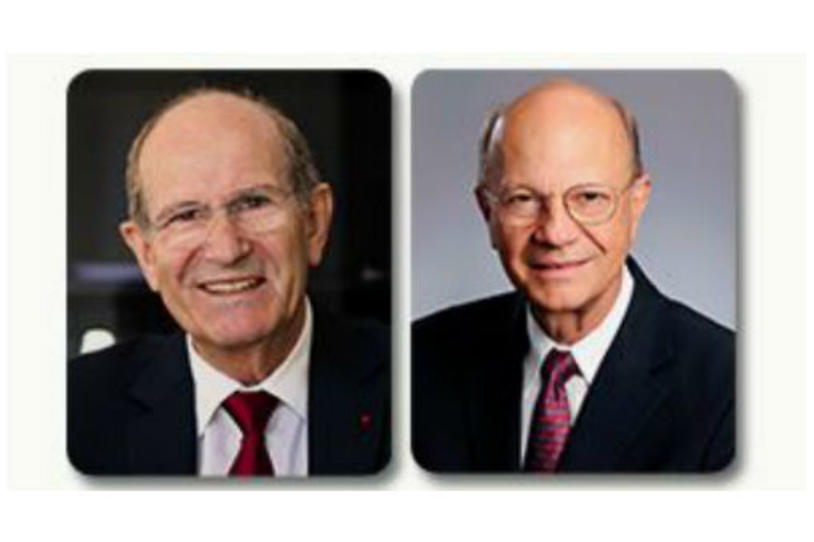
Drs. Alim Benabid (L) and Mahlon DeLong are recipients of the 2014 Lasker~DeBakey Clinical Medical Research Award.
A great nod to achievements in Parkinson’s research and care, the 2014 Lasker~DeBakey Clinical Medical Research Award, announced today, went to Alim Louis Benabid, MD, PhD, and Mahlon R. DeLong, MD, for development of deep brain stimulation of the subthalamic nucleus, a surgical technique for treatment of Parkinson’s motor symptoms.
The Lasker Awards — regarded as the Nobel Prizes of medical research — are awarded by the Albert and Mary Lasker Foundation and recognize contributions to the understanding, diagnosis, treatment, cure and prevention of human disease.
For deep brain stimulation (DBS) a surgeon implants a thin electrode into the brain, targeting motor circuits that are not functioning properly. Small electrical pulses from a device similar to a cardiac pacemaker block the signals that cause some Parkinson's motor symptoms. While DBS is not suitable for all patients, for those who are good candidates, the procedure can significantly improve quality of life.
DeLong Identifies the Target
From the late 1960s, Dr. DeLong, now at the Emory University School of Medicine, devoted his research to mapping the basal ganglia, a part of the brain that plays a role in movement. He theorized that neurons in this area operated in different circuits.
“These were separate pathways. It explained really, and provided a scaffolding for understanding, how diseases of the basal ganglia could present in so many ways,” Dr. DeLong said in a video created for the Lasker Foundation.
He pinpointed an area of the basal ganglia, the subthalamic nucleus, as the source of overexpression that can lead to Parkinson’s motor symptoms. By silencing those cells with a neurotoxin, he saw a reversal of PD symptoms in pre-clinical models.
Benabid Discovers Stimulation Effect
Meanwhile, in France, Dr. Benabid was lesioning small parts of the brain to alleviate movement disorder symptoms. Before lesioning, he checked the brain target with stimulation of usually around 50 hertz. One day in 1987 he tried something different.
“Coming close to 100 hertz, the effects were totally different. They were actually opposite to what we would expect and, particularly, we could describe them as ‘lesion-like effect,’ Dr. Benabid, from the Joseph Fourier University, Grenoble, France, said in the Lasker video. “That was the ‘aha’ moment. Could it be a solution for my problem? To treat the patient, stop the tremor without making a lesion?”
He began stimulating a part of the brain called the thalamus, which plays a role in tremor. Upon reading about Dr. DeLong’s research into the subthalamic nucleus, however, Dr. Benabid pursued this target for stimulation. DBS of this brain area has shown to suppress tremor, slowness of movement and rigidity.
The Michael J. Fox Foundation honored Dr. Benabid with the 2013 Robert A. Pritzker Prize for Leadership in Parkinson’s Research. Dr. DeLong is the recipient of a 2014 Breakthrough Prize in Life Sciences bestowed by a group of Silicon Valley titans.
Watch the video on Drs. Benabid and DeLong’s work.
